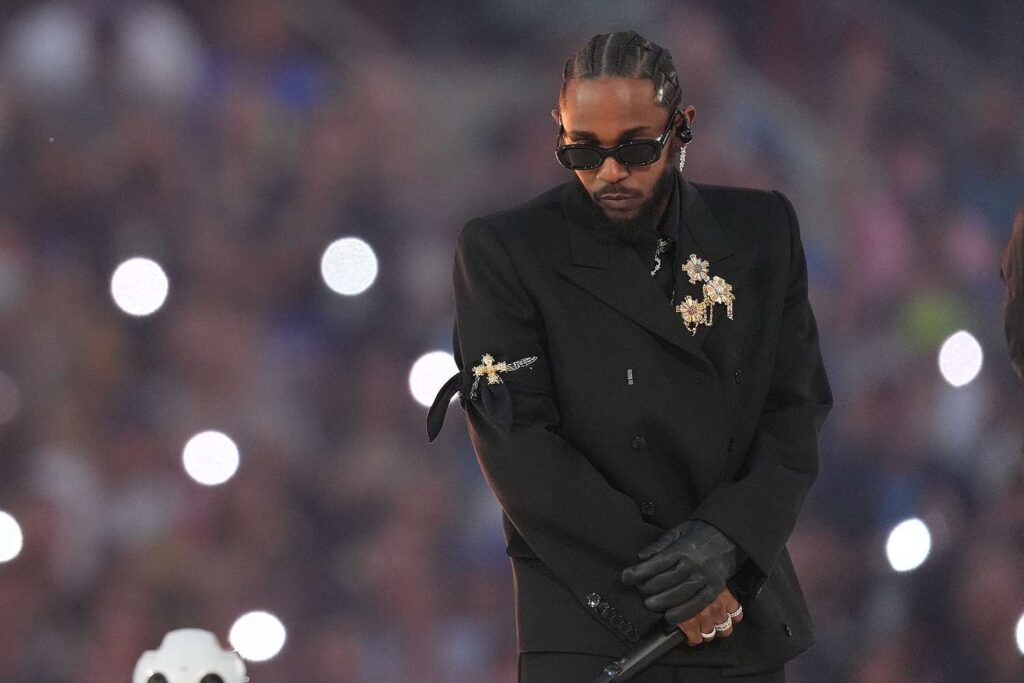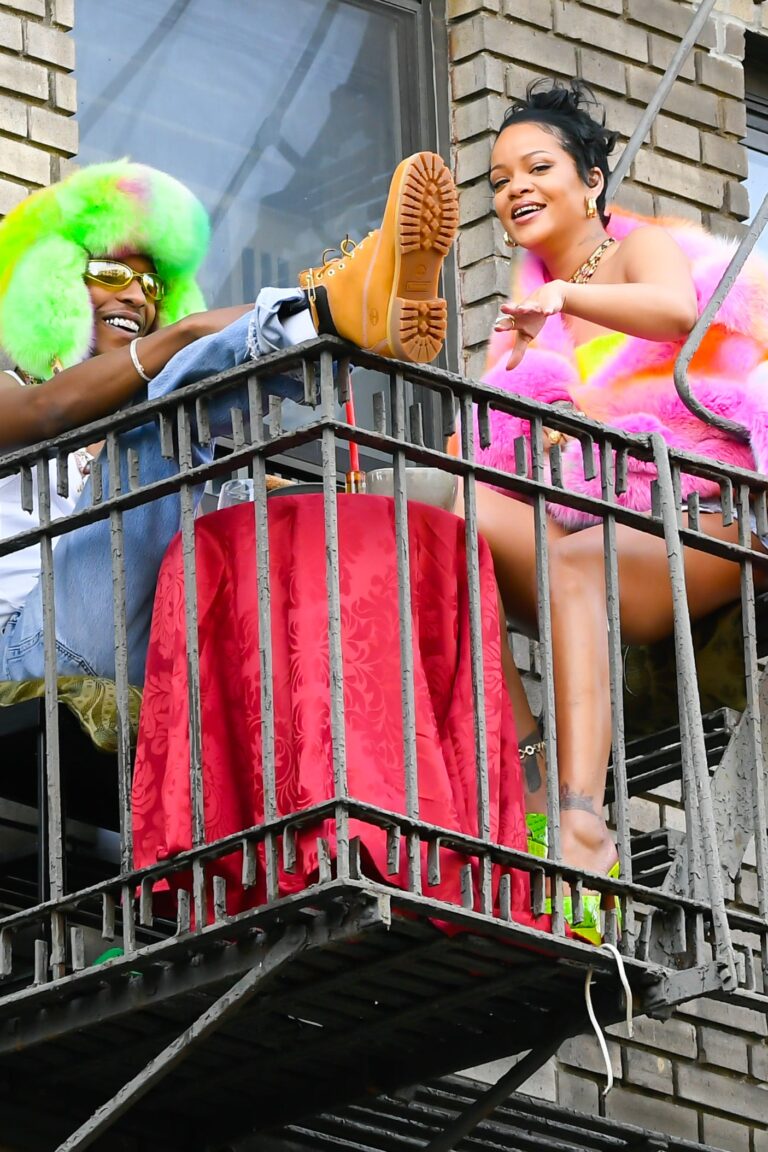
Audience
- Sentiment: Positive
- Political Group: Liberal
- Age Group: 18-34
- Gender: Male
Overview
- Kendrick Lamar made history as the first solo hip-hop artist to headline a Super Bowl halftime show.
- His performance celebrated hip-hop culture and addressed important societal issues such as inequality and systemic oppression.
- The show featured a collaboration with SZA, emphasizing community and artistic support within the hip-hop industry.
Kendrick Lamar Shines in a Historic Super Bowl Halftime Show
When we think of the Super Bowl, we often picture incredible football plays, intense rivalries, and of course, the flashy halftime shows that captivate millions of viewers. This year, the halftime performance took a groundbreaking turn when Kendrick Lamar stepped into the spotlight, marking a significant moment in music history. The event took place at the Caesars Superdome in New Orleans, and it was more than just entertainment; it was a celebration of hip-hop, culture, and unity.
Imagine this: the stadium is packed, the atmosphere is electric, and out walks none other than Samuel L. Jackson, dressed as Uncle Sam, with his iconic voice echoing through the arena. This representation wasn’t just a fun costume; it symbolized a call to recognize and celebrate American culture and identity. Jackson, a legendary actor, set the tone for what was about to unfold, introducing Kendrick Lamar, who made history as the first solo hip-hop artist to headline a Super Bowl halftime show. It’s hard to overstate how significant this moment was—not just for Kendrick, but for hip-hop as a whole.
Lamar’s performance was both a personal and cultural statement. He opened with passionate energy, launching straight into his songs, including the anthem-like “HUMBLE.” and the powerhouse track “DNA.” His presence on stage wasn’t just about hitting the right notes; it was a showcase of storytelling through powerful lyrics and dynamic choreography. Kendrick has always been known for his ability to weave narratives into his music, and this performance was no different. He used the platform to express his journey, his struggles, and the triumphs of his community, showing that hip-hop is not just entertainment; it’s a powerful art form that reflects society.
Kendrick was accompanied by a group of talented dancers, all dressed in patriotic colors—red, white, and blue. Their energetic movements added a visual aspect to his performance, emphasizing themes of pride and unity. The choreography was sharp and precise, and it complemented Kendrick’s commanding stage presence. This was more than just a concert; it became a visual showcase of American culture through the lens of hip-hop. Each movement signified rhythm and rebellion, a celebration of creativity rooted deep in the heart of the United States.
Adding another layer of excitement to the performance, Kendrick brought special guest SZA on stage. Their chemistry was undeniable, and fans erupted in cheers as they performed together. SZA, a talented artist in her own right, has collaborated with Kendrick before, and their combined energy showcased the interconnectedness of artists in the music industry today. Together, they created a moment that felt inclusive and celebratory, highlighting the strength that comes when artists support one another.
One intriguing part of Kendrick’s performance was the unspoken tension regarding his lyrical rivalry with fellow rapper Drake. While they didn’t directly address this competition during the show, the power of hip-hop often lies in the subtleties of its storytelling. By sharing the stage with SZA, Kendrick subtly reminded everyone that, despite the rivalries, collaboration and community in hip-hop should take precedence. This sentiment resonated with fans and underscored the idea that while artists may have their differences, they can still come together to create something magical.
Kendrick’s 13-minute set felt both too short and just right. In an industry where performances can feel overproduced or excessively flashy, Kendrick’s artistry shone through. He didn’t rely on elaborate stage designs or countless guest performers; instead, he harnessed the power of his lyrics and passion to engage the audience. Moments of silence, deep lyrics, and the raw emotion poured into each song allowed for connection. It was a reminder that rap’s roots lie in storytelling and personal expression.
During his performance, there were moments that made you think—Kendrick spoke to his experiences and those of many people facing challenges in their lives. He often highlights issues such as inequality, systemic oppression, and personal growth in his music, and this performance was no exception. He used the stage as his platform, not only to entertain but also to invite reflection. In a world that often feels divisive, Kendrick reminded us of the importance of community and standing strong in the face of adversity.
The cultural impact of Kendrick’s performance at the Super Bowl extends far beyond just entertainment, taking hip-hop to a level where it can impact societal norms and inspire conversations around important issues. It serves as a beacon for young artists from marginalized communities, illustrating that they too can achieve greatness and have their voices heard on grand stages. This success isn’t just about one individual; it’s a vital moment for the entire hip-hop community as it continues to strive for recognition and respect in mainstream culture.
Kendrick Lamar’s unforgettable performance solidified his status as one of the most important figures in hip-hop history. He has consistently used his platform to challenge listeners, reflect cultural truths, and promote unity. While performances like these are exciting for their entertainment value, they also spark discussions about race, identity, and the complexities within society. In doing so, Kendrick has created not just an artistic legacy but a cultural one as well.
So, what does this mean for the future of hip-hop? Kendrick’s performance isn’t just a moment in time; it’s a step toward further acceptance and celebration of diverse musical genres at prominent events. It sends a message that hip-hop deserves to be recognized on platforms like the Super Bowl, a stage historically dominated by pop and rock artists. As we continue to witness the evolution of music, it’s important to celebrate these milestones that pave the way for artists to come.
As the halftime show ended, and the cameras panned over the enthusiastic crowd, it was clear that Kendrick Lamar had made history. His captivating presence and profound artistry showcased the power of rap’s influence on culture and identity. But it leaves us with a thought-provoking question: How do performances like Kendrick’s shape the music industry and inspire future generations of artists?
Feel free to share your thoughts and perspectives in the comments below! Do you think hip-hop is finally getting the recognition it deserves? What do you hope to see from the music industry in the future?






